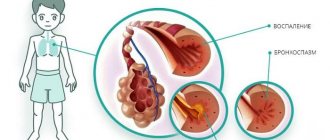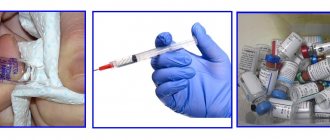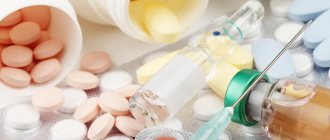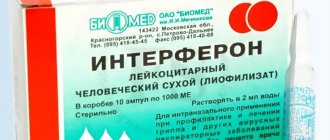ALBUMINS
(Latin albumen protein) is the group name for simple natural proteins that make up the bulk of the proteins in animal and plant tissues. Typical representatives: Blood serum albumin, milk lactalbumin, animal muscle myoalbumin, as well as leukosin of wheat, rye and barley, buckwheat and soybean legumenin, castor bean ricin, and so on. Despite the wide variety of different representatives, Albumins have one common property: they precipitate when the solution is completely saturated with ammonium sulfate. Albumins have a relatively low molecular weight and high electrophoretic mobility (see Electrophoresis). Serum albumin is contained in the blood in an amount of 4-5 g per 100 ml and makes up more than 50% of serum proteins. The molecular weight of serum albumin in cattle is about 67,000, in horses - 70,000, in rats - 65,000. The molecular weight of serum albumin in humans is 65,000, the isoelectric point is within the pH range of 4.6-4.7. Cross immunological reactions (see Immunochemistry) between serum A. from different animals are weak, which is explained by significant differences in the amino acid composition of these proteins.
Release form and composition
The drug is produced in the form of a solution for infusion: a transparent yellow liquid with a possible green tint (20% solution of 50 or 100 ml, 5% and 10% solutions of 50, 100, 200 or 400 ml in a glass bottle of 50, 100, 250 or 500 ml, respectively, the bottle is hermetically sealed with a rubber stopper and crimped with an aluminum cap, 5%, 10% and 20% solutions of 10 or 20 ml in a glass ampoule, in a cardboard box 1 bottle or 10 ampoules complete with an ampoule knife and instructions for use Albumin; if the ampoules have a colored ring, a break, a notch or an identification colored dot on the ampoule clamp, there is no ampoule knife in the pack).
1 ml of the drug contains:
- active ingredient: albumin – 50, 100 or 200 mg;
- additional components: sodium chloride, sodium caprylate, water for injection.
Analogs
Level 4 ATC code matches:
Perftoran
Gelofusin
Poliglyukin
Stabizol
Ceruloplasmin
Refortan
Hemodez
Reopoliglyukin
Plasbumin 20 , Albumin 20% , Alburex , Zenalb-20 , Postab solution .
Pharmacological properties
Albumin is a natural protein that is part of the protein fraction of human blood plasma. The molecular weight of albumin is 69,000 daltons. Solutions of the drug 5%, 10% and 20% are used to correct hypoalbuminemia of various natures, restore and maintain colloid-osmotic (oncotic) pressure and water-electrolyte balance, eliminate disturbances of central and peripheral hemodynamics. The product also demonstrates detoxification properties.
In the body, albumin ensures the binding and transport of fatty acids, pigments (including bilirubin), ions of certain metals and medicinal substances. The drug is characterized by a high binding ability to toxins and further inactivates the latter.
Diseases that increase albumin in the blood
Quite often, the cause of an increase in albumin in the blood is simple dehydration. But it is not always the lack of water that is a deviation from the norm.
Hyperalbuminemia is a rather rare phenomenon, but is often observed in the following pathological processes occurring in the human body:
- Infectious diseases.
- Multiple myeloma.
- Waldenström's macroglobulinemia.
- Systemic lupus erythematosus.
- Rheumatoid arthritis.
- Chronic hepatitis or cirrhosis of the liver.
- Vomiting or diarrhea are the main causes of dehydration, and, consequently, the diseases that caused them.
- Intestinal obstruction.
- Diabetes and nephritis.
- Extensive burns.
- Taking corticosteroids and bromsulfalein.
- Compression of veins, for example, when applying a tourniquet.
- Cholera.
- Dehydration in severe injuries.
- Hemoconcentration.
Indications for use
- a decrease in the level of total protein below 50 g/l, a decrease in the concentration of albumin in plasma below 30 g/l or a level of colloid osmotic pressure below 15 mm Hg. Art.;
- hypoalbuminemia of various etiologies: acute blood loss [decrease in circulating blood volume (CBV) by more than 25–30%], shock (traumatic, hemorrhagic, thermal), purulent-septic conditions, burn disease, kidney disease (including nephritis and nephrotic syndrome), liver diseases that occur with a violation of its albumin-producing function;
- hemolytic disease of newborns during replacement (exchange) blood transfusion;
- operations performed using artificial circulation;
- preoperative hemodilution and procurement of autologous blood components;
- cerebral edema;
- therapeutic plasmapheresis.
Normal blood levels in women and men
As for the norm of albumin in the blood and a person’s gender, there is no significant difference. The age of the subject from whom the sample was taken for research plays an important role. That is why, when talking about the normal blood level in men and women, it is more logical to use an age division scheme. So, if you calculate its values in grams per liter of liquid, then in children under 14 years of age it is normally 38-54 g/l.
As for adults aged 14 to 60 years, the normal level of globulin in the blood is 35-52 g/l .
Having crossed the threshold of 60 years, the level of albumin in the blood decreases slightly and is already 32-46 g/l.
If protein increases or decreases, this may be due to both qualitative and quantitative changes. But since the former are quite rare, due to the fact that the composition of albumin is homogeneous, quantitative changes that manifest themselves as hypo- and hyperalbuminemia are more common. They can be caused by both external and internal factors and signal pathology in the body.
Contraindications
Absolute:
- severe heart failure (stages IIB–III);
- uncontrolled arterial hypertension;
- cerebral hemorrhage;
- thrombosis;
- internal bleeding;
- pulmonary edema;
- hypervolemia;
- hypersensitivity to any of the components of the drug.
Relative (the drug must be used with extreme caution):
- arterial hypertension;
- stage I heart failure;
- renal failure.
Solution for infusion Albumin human
Instructions for medical use of the drug
Description of pharmacological action
A plasma replacement agent for parenteral protein nutrition, obtained by fractionating human plasma, placenta, blood, and serum from healthy donors.
Indications for use
Shock (traumatic, surgical and toxic), burns accompanied by dehydration and blood thickening, hypoproteinemia and hypoalbuminemia, gastrointestinal lesions with digestive disorders (peptic ulcer, tumors, difficulty passing the gastrointestinal anastomosis, etc.).
Release form
solution for infusion 5%; bottle (bottle) with a holder 100 ml with a holder for the bottle, cardboard pack 1. solution for infusion 5%; bottle (bottle) with a holder 250 ml with a holder for the bottle, cardboard pack 1. solution for infusion 5%; bottle (bottle) with a holder 500 ml with a holder for the bottle, cardboard pack 1. solution for infusion 20%; bottle (bottle) with a holder 100 ml with a holder for the bottle, cardboard pack 1. solution for infusion 20%; bottle (bottle) with a holder 50 ml with a holder for the bottle, cardboard pack 1. solution for infusion 20%; bottle (bottle) 100 ml with suspension, cardboard pack 1. solution for infusion 20%; bottle (bottle) 50 ml with pendant, cardboard pack 1.
Pharmacodynamics
A plasma replacement drug obtained by fractionating human plasma. Albumin solution 5% is isoncotic to plasma. A 20% albumin solution is hyperoncotic, and its colloid-osmotic effect is approximately 4 times greater than that of plasma. With intravenous administration of the drug, oncotic pressure in the intravascular space increases, which leads to an increase and maintenance of bcc. The duration of this effect may vary between patients. In some patients, the increase in plasma volume may persist for several hours. Albumin is also a transport protein that binds and transports hormones, enzymes, and medications in the vascular bed.
Pharmacokinetics
Distribution Normally, the total metabolic fraction of albumin is 4-5 g/kg body weight; of this amount, 40-45% are in the vascular bed, and 55-60% are in the extravascular space. In pathological conditions (severe burns or septic shock), the normal distribution of albumin is disrupted, which is associated with a significant increase in capillary permeability. Metabolism and excretion T1/2 of albumin averages 19 days. Elimination occurs intracellularly with the participation of lysosomal proteases. In healthy volunteers, less than 10% of intravenously administered albumin is cleared from the vascular bed during the first 2 hours after infusion. However, critically ill patients may lose significant amounts of albumin, and the rate of albumin release from the vascular bed is unpredictable.
Use during pregnancy
The safety of the drug in pregnant women has not been studied in controlled clinical studies. The existing experience of clinical use of albumin solution does not give reason to expect any harmful effects on the course of pregnancy, on the fetus or newborn, since human albumin is a normal component of human blood plasma.
Contraindications for use
Thrombosis, severe hypertension, ongoing internal bleeding, severe forms of heart failure.
Side effects
Increased body temperature, pain in the lumbar region, urticaria.
Directions for use and doses
The drug concentration, dose and infusion rate should be selected individually in each specific case.
Overdose
Symptoms: in cases where the dose and infusion rate are excessively high or do not correspond to the patient’s circulatory parameters, hypervolemia and its characteristic symptoms of overload of the cardiovascular system (shortness of breath, swelling of the jugular veins, headache) may develop. It is also possible to increase arterial and/or central venous pressure and develop pulmonary edema. Treatment: at the first manifestation of symptoms of overload of the cardiovascular system, you should immediately stop administering the drug and establish constant monitoring of circulatory parameters. According to indications - symptomatic therapy. There are no specific antidotes.
Interactions with other drugs
Specific interactions of human albumin with other drugs are unknown.
Precautions for use
Administration during dehydration is possible only after first ensuring sufficient fluid intake (orally, parenterally).
Storage conditions
List B.: At a temperature of 2–25 °C (do not freeze).
Best before date
36 months
ATX classification:
B Hematopoiesis and blood
B05 Plasma replacement and perfusion solutions
B05A Blood products
B05AA Blood plasma preparations and plasma replacement preparations
B05AA01 Albumin
Albumin, instructions for use: method and dosage
Albumin solution is administered intravenously, drip or stream.
A single dose of the drug is set individually, taking into account the severity of the lesion, the condition and age of the patient, as well as the concentration of the solution. The average single dose of 5%, 10% and 20% Albumin is 200–300 ml. If necessary, it is possible to increase the dose of a 5% solution to 500–800 ml at an infusion rate of no more than 50–60 drops per minute. A single dose of 20% Albumin should not exceed 100 ml.
Infusions of albumin solution 10% and 20% are recommended to be carried out at a rate not exceeding 40 drops per minute. For the treatment of cerebral edema, hyperoncotic 10%, 20% solutions of the drug are prescribed.
If there is a need for a rapid increase in blood pressure (blood pressure) against the background of shock of various origins (hemorrhagic, traumatic, thermal), jet administration of the drug is allowed.
Before transfusing the drug, the attending physician must conduct a thorough visual inspection of the solution and the container in which it is contained. If the solution is not transparent or suspension and sediment are found in it, it is prohibited to administer the drug. The plasma replacement agent can be used for infusions only if the closure is kept tight, the label is intact and there are no cracks on the bottle. The medical history must record the results of the examination of the drug and the data indicated on the label (including the name of the drug, batch number, manufacturer).
Albumin price, where to buy
You can buy Albumin in Moscow in many pharmacies. The price of Albumin 10% 100 ml ranges from 1317-1590 rubles, and the drug 20% 100 ml from 3099-4042 rubles. Egg albumin, used in the food industry, is produced in bags of 5-20 kg, and is also sold by weight in specialized stores.
- Online pharmacies in RussiaRussia
- Online pharmacies in UkraineUkraine
- Online pharmacies in KazakhstanKazakhstan
ZdravCity
- Albumin human solution for inf.
5% bottle 500ml, cardboard packOctapharma Pharmazeutika Produktions GmbH RUR 6,172 order - Albumin human solution for inf. 5% bottle 250ml, cardboard packOctapharma Pharmazeutika Produktions GmbH
RUB 3,100 order
- Albumin solution for inf. 20% 100ml JSC NPO Microgen
RUR 3,874 order
- Albumin solution for inf. 10% 100ml FSUE Microgen NPO FSUE
RUB 2014 order
Pharmacy Dialogue
- Albumin (vial 20% 100ml)Baxter Oncology
RUR 4,399 order
- Albumin (flask 20% 100ml) Microgen (ImBio N.-Novgorod)
RUR 3,808 order
- Albumin (vial 20% 100ml) Microgen Ufa (Immunopreparation)
RUB 3,847 order
- Albumin (vial 10% 100ml) Microgen N.-Novgorod (ImBio)
RUB 1,884 order
show more
Pharmacy24
- Hematovit with albumin and dried apricots 40 g TOV Vitapak, Dnipropetrovsk
9 UAH order - Albumin-Biopharma 20% 50 ml solution TOV "Biopharma Plasma" , Ukraine
981 UAH order
- Hematovit with albumin and coconut flakes 40g TOV Vitapak, Dnipropetrovsk
9 UAH order
- Albumin-Biopharma 10% 100ml solution for infusion TOV "Biopharma Plasma" , Ukraine
1044 UAH order
- Hematogenium classic with albumin 50g TOV "RIF", Ukraine
7 UAH order
PaniPharmacy
- Albumin infusion Albumin solution 20% 100ml Ukraine, Biopharma Plasma LLC
1810 UAH order
- Albumin infusion Albumin solution 20% 50ml Ukraine, Biopharma Plasma LLC
1245 UAH. order
- Albumin infusion Albumin solution 10% 100ml Ukraine, Biopharma Plasma LLC
1013 UAH. order
show more
Side effects
During drug therapy, in rare cases, the appearance of such undesirable effects as increased body temperature, urticaria, chills, shortness of breath, tachycardia, decreased blood pressure, and pain in the lumbar region may occur.
If the development of adverse events or complications is noted, it is necessary to immediately stop administering the drug and, without removing the needle from the vein, administer glucocorticoids, cardiotonics, antihistamines, vasopressor drugs (if there are appropriate indications).
Albumin food grade black
Soviet pharmaceutical factories began producing Hematogen in 1930. The taste of the drug is reminiscent of the famous “Iris” candy. According to the instructions, its composition contains black albumin mixed with condensed milk and sugar syrup. In nature, large amounts of this element are stored in egg whites, beef, and potatoes. The drug has a low price, so it is prescribed for the prevention of anemia. To increase the therapeutic effect of hematogen, its composition is enriched with iron sulfate.
Dietary albumin is obtained from the blood of cattle that have undergone defatting procedures. Polyphosphates are used to stabilize elements. The substance includes amino acids, carbohydrates and fats. The disadvantage of bovine protein is the high content of allergens in animal red blood cells. With prolonged use of the product, adults experience itching, swelling, and skin rashes. You can add medicine to your daily diet only on the recommendation of a doctor.
Reviews about Albumin
There are very few reviews about Albumin on medical forums, since this plasma replacement agent is used in a hospital setting and is most often prescribed in critical cases. Experts say that the use of the drug in the treatment of many lesions of internal organs, leading to a decrease in the level of total protein and in particular albumin, significantly improves the prognosis for patients. Currently, due to the high cost of the drug, it is often replaced (except for the correction of severe hypoalbuminemia) with alternative means - modern synthetic colloidal plasma substitutes.
Sometimes, according to reviews, during the use of the drug, the appearance of allergic reactions, increased/decreased blood pressure, and tachycardia were noted.
Short description
Most albumin is found in lymph and plasma, but it can also be found in the cerebrospinal fluid. If a person has any pathologies, then the substance penetrates into the urine. In a healthy person, the kidneys will not be able to pass albumin molecules, since they are quite large. It is the tests that can determine the exact concentration of protein, which indicates the degree of damage to the organ.
Numerous studies have shown that albumin is found not only in human blood, but also in the structure of some plants. The norms of this protein depend on many factors. That is why experts recommend monitoring its concentration in order to maintain optimal body condition.
The main functions of albumin include:
- Optimal supply of amino acids. Large protein molecules are presented in the form of a specific storage for important substances, without which the body cannot function normally. If for some reason there is a shortage of this substance, the body adjusts to distribute it evenly throughout all tissues.
- Stable functioning of the circulatory system. It is due to the presence of albumin that plasma and lymph are in optimal condition. The fluid does not leave the bloodstream. Even the smallest amount of protein allows you to maintain stable plasma pressure. Due to this, the accumulation of fluid in the tissues is prevented (protection against edema). It is worth noting that kidney damage can provoke uncontrolled release of albumin.
- Transportation. The protein molecule is most suitable for transferring useful substances through the bloodstream. Transport of hormones, medications, vitamins, and other useful substances that cannot dissolve in water occurs.
You need to take a blood test to determine albumin in the morning on an empty stomach. In order to ultimately get the most accurate result, it is forbidden to engage in active sports and eat food 12 hours before the procedure. The analysis is carried out very quickly. If the blood sampling was carried out according to all the rules, then errors are unlikely. Urine for analysis is collected only in the morning in a clean container.






